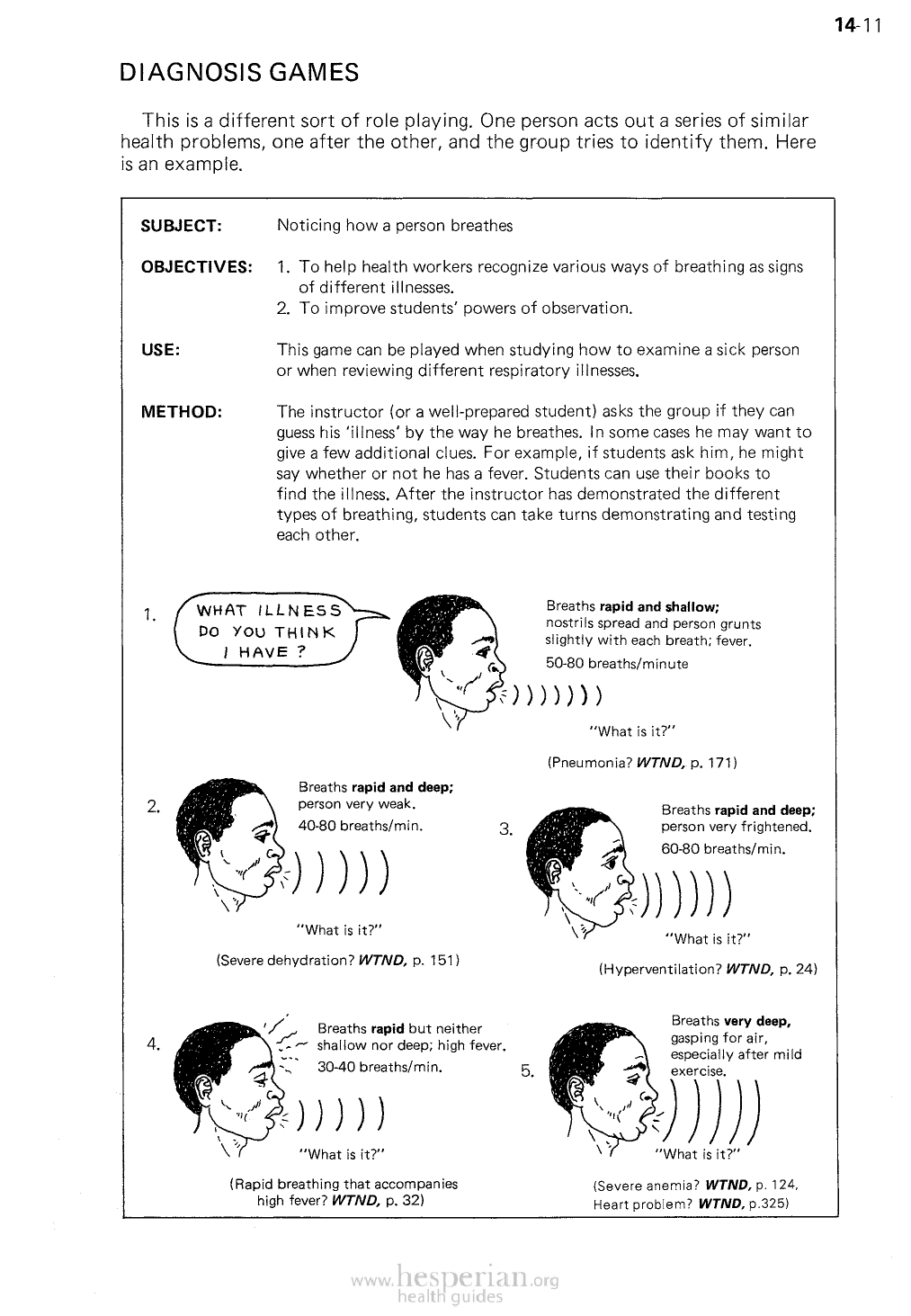
14-11
DIAGNOSIS GAMES
This is a different sort of role playing. One person acts out a series of similar
health problems, one after the other, and the group tries to identify them. Here is an
example.
SUBJECT:
Noticing how a person breathes
OBJECTIVES: 1. To help health workers recognize various ways of breathing
as signs of different illnesses.
2. To improve students’ powers of observation.
USE:
This game can be played when studying how to examine a sick
person or when reviewing different respiratory illnesses
METHOD:
The instructor (or a well-prepared student) asks the group if
they can guess his ‘illness’ by the way he breathes. In some
cases he may want to give a few additional clues. For example,
if students ask him, he might say whether or not he has
a fever. Students can use their books to find the illness. After
the instructor has demonstrated the different types of breathing,
students can take turns demonstrating and testing each other.
1.
Breaths rapid and shallow;
nostrils spread and person grunts
slightly with each breath; fever.
50-80 breaths/minute
“What is it?”
(Pneumonia? WTND, p. 171)
Breaths rapid and deep;
2. person very weak.
40-80 breaths/min.
3.
Breaths rapid and deep;
person very frightened.
60-80 breaths/min.
“What is it?”
(Severe dehydration? WTND, p. 151)
Breaths rapid but neither
4. shallow nor deep; high fever.
40-80 breaths/min.
5.
“What is it?”
(Hyperventilation? WTND, p. 24)
Breaths very deep,
gasping for air,
especially after mild
exercise.
“What is it?”
(Rapid breathing that accompanies
high fever? WTND, p. 32)
“What is it?”
(Severe anemia? WTND, p. 124.
Heart problem? WTND, p. 325)